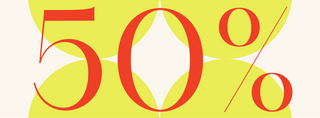By Hannah Campbell
Chokers, the neck-hugging jewelry style which never seems to fully go out of fashion. This style is commonly associated with the iconic fashion of the ‘90s. However, the rich history of chokers reveals that these accessories are far more than just a black velvet ribbon. The choker has captivated the past, extending beyond the pages of numerous catalogs and into the jewelry boxes of both students and celebrities in various forms throughout the ages. The enduring popularity of chokers is a testament of their versatility and variety. Brace yourself for a surprising journey through time, as we uncover the remarkable story of the choker.

Contrary to popular belief, the origin of the choker dates back to the Mesopotamian, Sumerians, and ancient Egypt civilizations, roughly between 2500 and 3000 BC. During these times, chokers held a special significance as symbols of protection. These civilizations believed that by adorning their neck, wrists, and head, they would be protected from bad energy and evil while still looking attractive.
During the French Revolution young women sported red ribbon chokers as a tribute to the fallen. Fashion historian Daniel Delis Hill explains that the Brits, harboring longstanding animosity towards the French, used these red chokers as taunts and they gained popularity during this time as a symbol of distain towards the French struggles. Portraits of Anne Boleyn, the Queen of England (1507-1536) however, depict her wearing chokers in several images long before the French Revolution. In contrast to the chokers being worn as the symbol of oppression, during the Victorian era (1837-1901), chokers were proudly flaunted by royalty. Queen Alexandra of Denmark was also known for wearing, what people of that time would call the ‘dog collar necklace’. Rumor has it that although she wore chockers, it was simply to conceal a scar from thyroid surgery, making the chocker both an aesthetic and practical piece to wear.
At this time chokers were associated with wealth, and came in lavish jewelry boxes, which very few people at that time could afford. Afterwards different choker styles were adopted and worn by people of all classes. Women started attaching broaches to pieces of velvet ribbon and as mass production flourished during the Second Industrial Revolution, affordable versions became widespread.
During the 1970s, chokers experienced a major comeback, this time challenging gender norms. Icons of rock such as Mick Jagger, David Bowie and Jimi Hendrix, renowned for their boundary pushing and androgynous styles, embraced chokers as a form of self-expression.![]()
By the ‘90s another resurgence of the choker arrives with a different angle and meaning. Instead of the diamond-dripping art deco versions, which were modestly common in the 20th century, a new aesthetic emerged – one infused with grunge and angst. Women gravitated towards fabric or velvet chokers adorned with metal clasps or trinkets, channeling a punk vibe reminiscent of 1970s London. Some chokers even incorporated padlocks, metal chains and dog collars. The simplicity of a black ribbon held rebellious or emotional connotations, symbolizing vulnerability through the exposed neck.
Possibly the most famous chocker of the modern era was the renowned creation for Diana Princess of Wales. An exquisite piece combined a sapphire and diamond brooch on a short necklace of seven strands of pearls, gifted to her by the Queen mother Elizabeth herself. Diana gained widespread attention when she wore this dancing with John Travolta at the White House in 1985 and also chose to wear it again in 1994 to accessorize her famous ‘revenge dress’.
The many facetted choker endures an appeal of expression that transcends time. This neck accessory continues to captivate with its rich history and diverse interpretations. However, one thing remains clear: The choker is, up until this day, an iconic piece that holds a timeless place in the world of fashion.
Recently, a trend that combines the choker and the corsage has been gaining popularity across various fashion scenes. Traditionally the corsage is worn on a dress or a wrist for formal occasions. The practice of pinning flowers to clothing symbolizes good luck and protection against evil spirits during weddings.
For many, the corsage holds sentimental value, serving as a cherished keepsake, which evokes memories of past formal evenings. However this fresh new take on the corsage as a choker, means you can wear it for any occasion, making it the perfect accompaniment for any outfit.
Elevate your style this summer with ‘The Flower Choker’ by SLEEVEE a company, born right here in Switzerland.
Valentina the designer, and founder behind these amazing pieces, has a deep-rooted passion for fashion. Driven by her love for creativity and with the unwavering support of friends and family, she has embarked on a journey to bring her vision to life.
Create the perfect brunch outfit by pairing it with a ribbed tank, a linen blazer, and a pair of oversized trousers. This classic outfit stands out with this floral fixture, adding an exciting touch to your overall look. Let the flower choker be the focal point of your outfit, by keeping other accessories to a minimal.
See you there,
Addi xoxo




